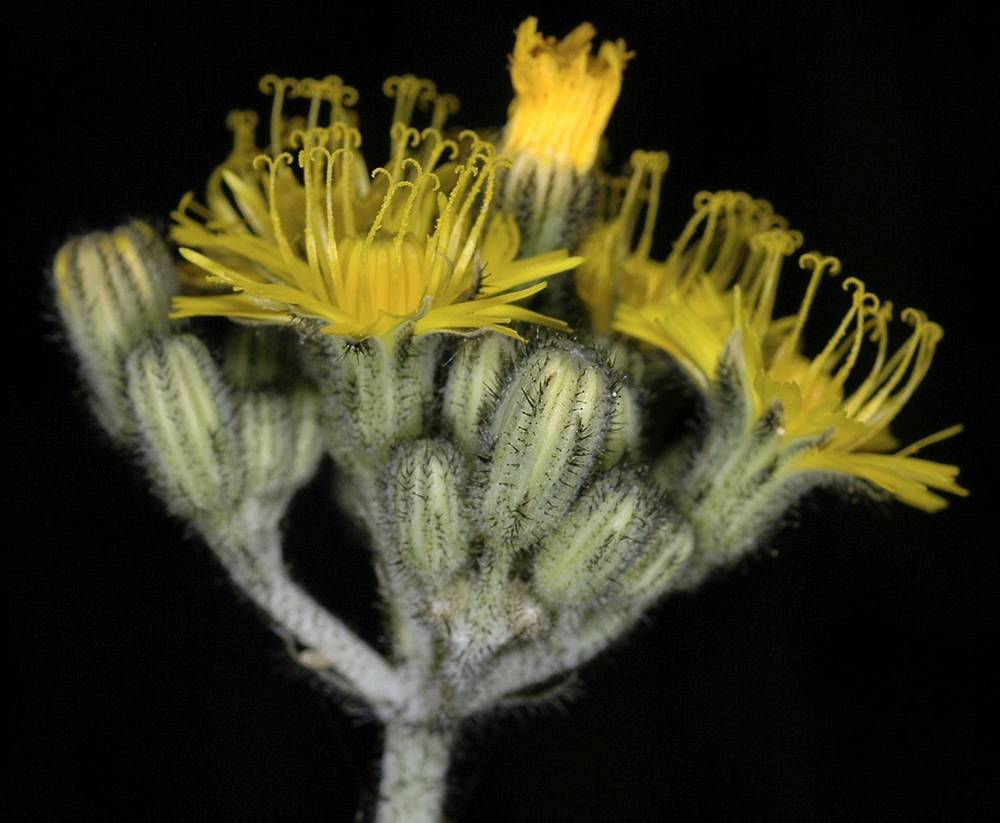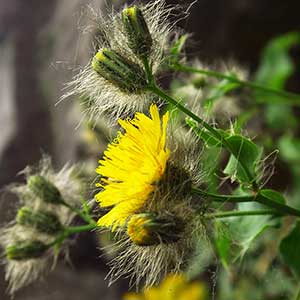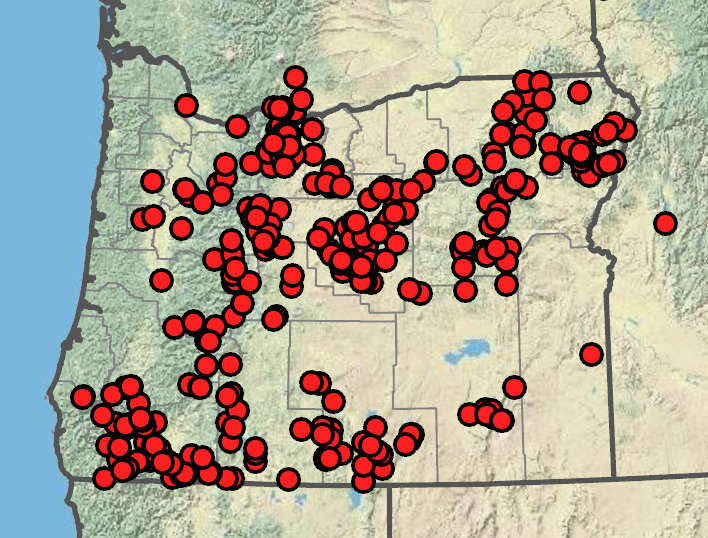Hieracium scouleri
Hieracium longiberbe
Scouler's hawkweed, woolly weed
long-bearded hawkweed
simple or branched;
surfaces glabrous to tomentulose, puberulent, or pilose-setose, sometimes glandular-setose distally.
simple or branched, glabrous or pilose.
basal or basal and cauline, narrowly or broadly oblanceolate or elliptic, 2.5–30 cm, bases attenuate;
margins entire, rarely denticulate;
surfaces pilose-setose and stellate-pubescent, rarely glabrous;
basal petioles often winged;
cauline usually sessile.
cauline, rarely a few basal early, spatulate to oblanceolate, 5–15 cm, bases attenuate;
margins entire or rarely denticulate;
surfaces glabrous to lightly or densely pilose-setose, usually sessile.
panicle- or raceme-like arrays, bracteate or not.
panicle- or raceme-like arrays, bracteate or not.
campanulate in flower; ovoid in fruit, 5–12 mm.
campanulate in flower; ovoid in fruit, 7–10 mm.
15–45+;
ligules 8–20 mm, yellow.
12–30;
ligules 10–15 mm, yellow.
linear-lanceolate;
surfaces pilose-setose with black hairs; inner 12–20+; outer gradually shorter.
linear-lanceolate;
surfaces densely long-setose with brown or black hairs; inner 10–16; outer gradually shorter.
columnar, 2.5–3 mm, dark brown.
columnar, 3–4 mm, brown.
=18.
Hieracium scouleri
Hieracium longiberbe
Forests, shrublands, grasslands, rocky ridges and slopes, roadsides. Flowering Jun–Sep. 0–2600 m. BR, BW, Casc, Col, ECas, Owy, Sisk, WV. CA, ID, NV, WA; north to British Columbia, northeast to Alberta, east to WY. Native.
Hieracium scouleri is here given a broad circumscription to include such segregate taxa as H. albertinum and H. cynoglossoides, which are sometimes also recognized at varietal rank.
Rocky slopes and cliffs, open woods. Flowering May–Aug. 0–600 m. Casc. WA. Native.
This species is limited to the Columbia River Gorge and its immediate vicinity. Its distinctive, densely pilose-setose involucres, lacking either tomentulose or stipitate-glandular pubescence, distinguish it from the closely allied species Hieracium scouleri, a widespread taxon whose numerous pubescence variants are not correlated with any particular geographical areas. Hieracium longiberbe and H. scouleri were shown to be sister taxa in a molecular phylogenetic study by Gaskin and Wilson (2007).
Kenton Chambers
Kenton Chambers
- Local floras:
BC,
CA,
OR,
WA
- Local Web sites:
CalFlora,
CalPhotos,
Flora NW,
PNW Herbaria,
Turner Photog.
WildflowerSearch
iNaturalist (observations)
USDA Plants Database
- LBJ Wildflower Center
- SEINet
- Plants of the World Online
- Encyclopedia of Life
- Wikipedia
- Google Image Search





